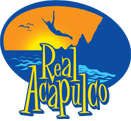Montezuma's Revenge

This page is dedicated to Montezuma's Revenge - such a frequent problem for people visiting Mexico that any travel guide that doesn't include a detailed section doesn't really deserve to call themselves a travel guide.
What is Montezuma's Revenge?
I would say that a bad case feels rather like someone coming up and giving you a big kick in the stomach at 30 second intervals. Really, it is really just another name for travelers' diarrhea that happens to take place in Mexico (where it's also known as "turista" ). Symptoms can include nausea, vomiting, abdominal pain, fever, sweats, chills, headache, and malaise.
Diarrhea is the most common travel-related illness so remember that if you do have to suffer through a case, you're in good company.
On a trip to Mexico in February 1979, President Jimmy Carter famously quipped to an apparently overly sensitive Mexican President Jose Lopez Portillo that he (President Carter) had been "afflicted with Montezuma's revenge." Lopez Portillo was by all accounts deeply offended by the comment and it has been suggested by some this caused a planned immigration reform measure to fail - even though I doubt he was THAT offended.
Montezuma's revenge is most widely associated with Mexico for two reasons:
1) Mexico gets a lot of tourists.
2) The tap water is not safe to drink (it's not potable as they say). Not even Mexicans themselves drink it.
According to Dr. Olds, a Professor of Medicine at the Medical College of Wisconsin: "Average Americans visiting Mexico for the first time - up to 85% of them - develops travelers' diarrhea." Montezuma's revenge comes in two main varieties: "The milder form is the result of changes in the normal bacteria your body is used to," and usually goes away in a couple days. There's the severe version, which results from ingesting a bacterial toxin. "It can go on for five days, accompanied by painful cramps," explains the good doctor.
What causes Montezuma's Revenge?
It may be caused by any number of organisms, including bacteria such as E. coli, Salmonella, Shigella, Campylobacter, Aeromonas, Plesiomonas, and vibrios; parasites such as Giardia, Entamoeba histolytica, Cryptosporidium, and Cyclospora; and viruses.
How can you avoid it?
The best way to avoid getting it is to avoid eating or drinking any suspect foods or beverages and avoiding any "street food". Don't drink tap water unless it has been boiled, filtered, or chemically disinfected. Remember to wash your hands thoroughly before putting them in your mouth, eyes, nose or other bodily orifice. If you really want to be safe, don't drink beverages or drinks with ice. Don't eat fruits or vegetables unless they've been peeled or cooked. Avoid cooked foods that have been sitting around for a while. Avoid unpasteurized milk, its byproducts, and run don't walk away from raw or undercooked meat or fish. If taking these steps does not assuage your concern a plastic bubble suit might be in order.
I've got it, now what do I do?
Try taking "a quinolone antibiotic like ciprofloxacin Cipro 500 mg twice daily or levofloxacin Levaquin 500 mg once daily for a total of three days. Alternative regimens include a three day course of rifaximin Xifaxan 200 mg three times daily or azithromycin Zithromax 500 mg once daily. Rifaximin should not be used by those with fever or bloody stools and is not approved for pregnant women or those under age 12. Azithromycin should be avoided in those allergic to erythromycin or related antibiotics. For children, the dosage of azithromycin is 10 mg/kg on day 1, up to 500 mg, and 5 mg/kg on days 2 and 3, up to 250 mg."
"An antidiarrheal drug such as loperamide Imodium or diphenoxylate Lomotil should be taken as needed to slow the frequency of stools, but not enough to stop the bowel movements completely. Diphenoxylate Lomotil and loperamide Imodium should not be given to children under age two.
Most cases of travelers' diarrhea are mild and do not require either antibiotics or antidiarrheal drugs." Remember to drink lots of liquids because the main problems for your body associated with diarrhea is dehydration. Drinks high in salt and sugar are best. Avoid dairy products. Pepto Bismol never hurts either. If things don't improve, become intense, or if blood makes an appearance at any point, you should go to the doctor right away.
Who is Montezuma?
Montezuma II (1470-1520) was the last independent Aztec emperor. He ruled much of the territory we now call Mexico until the Spanish conquest. Montezuma was known for his ability to consolidate power in his central government and had great success in asserting control over the semi-independent city-states that comprised Mexico under his rule. Despite his strong leadership, when the Spanish arrived in Mexico in 1519, Montezuma committed a fatal mistake failing to realize that they had come to take over. The Spaniards eventually captured and killed Montezuma and seized his empire. While old Montezuma may have passed from the scene, Montezuma's revenge lives on.
